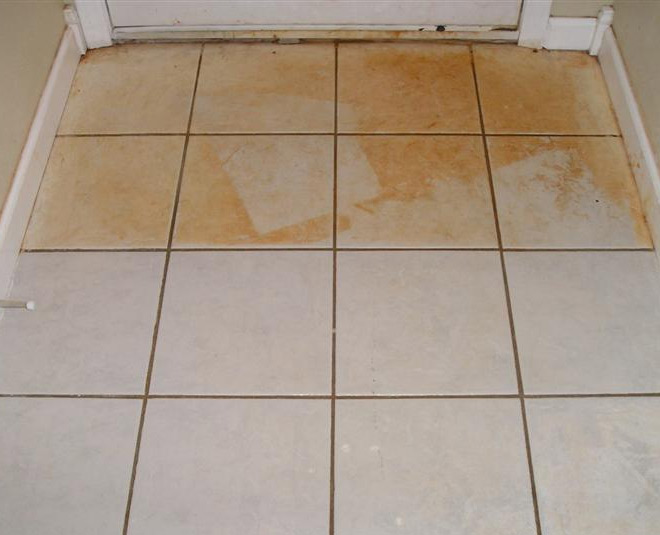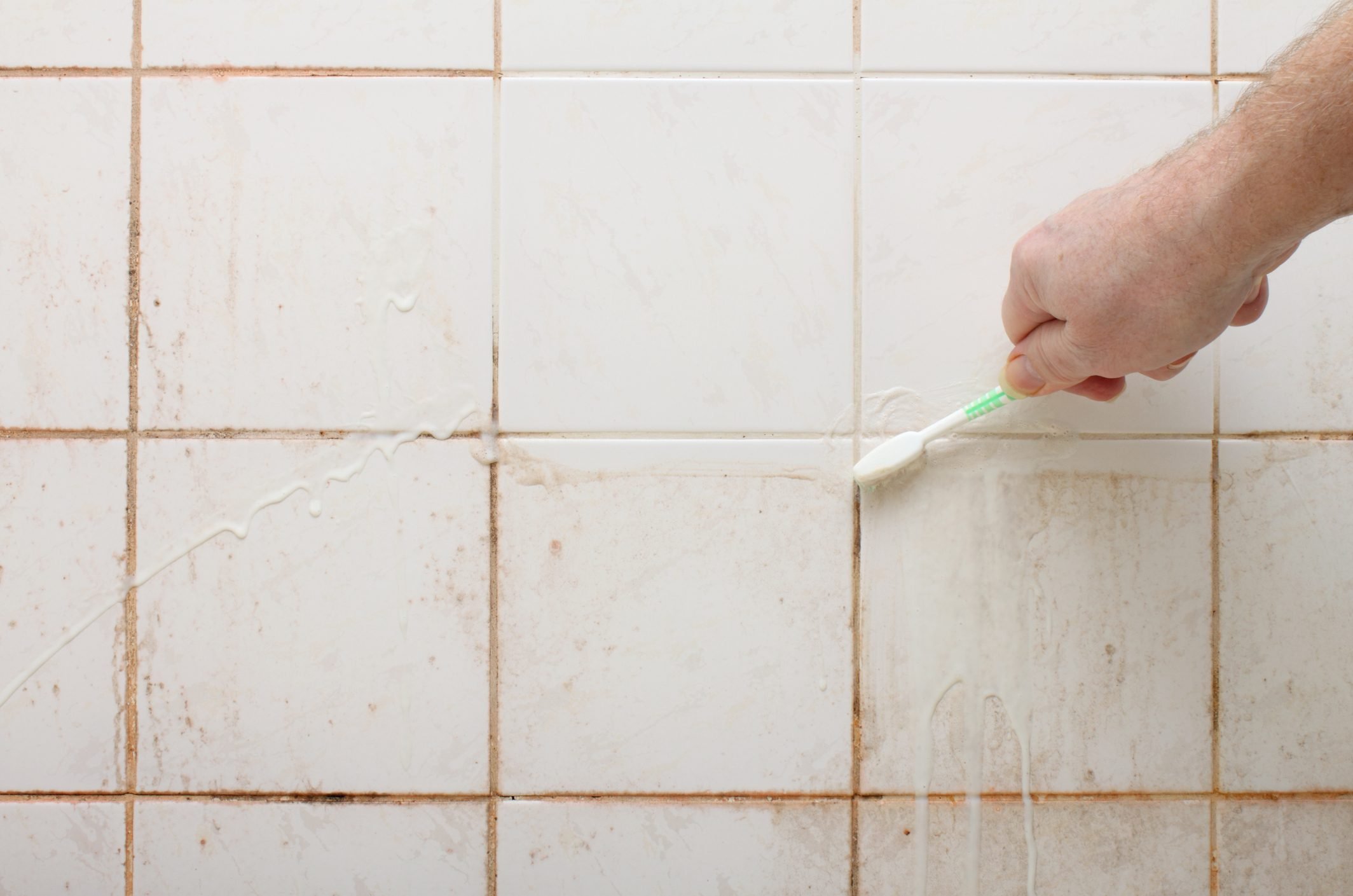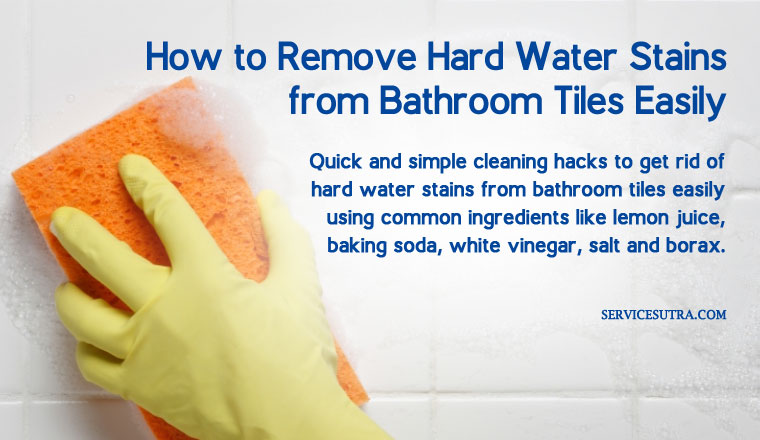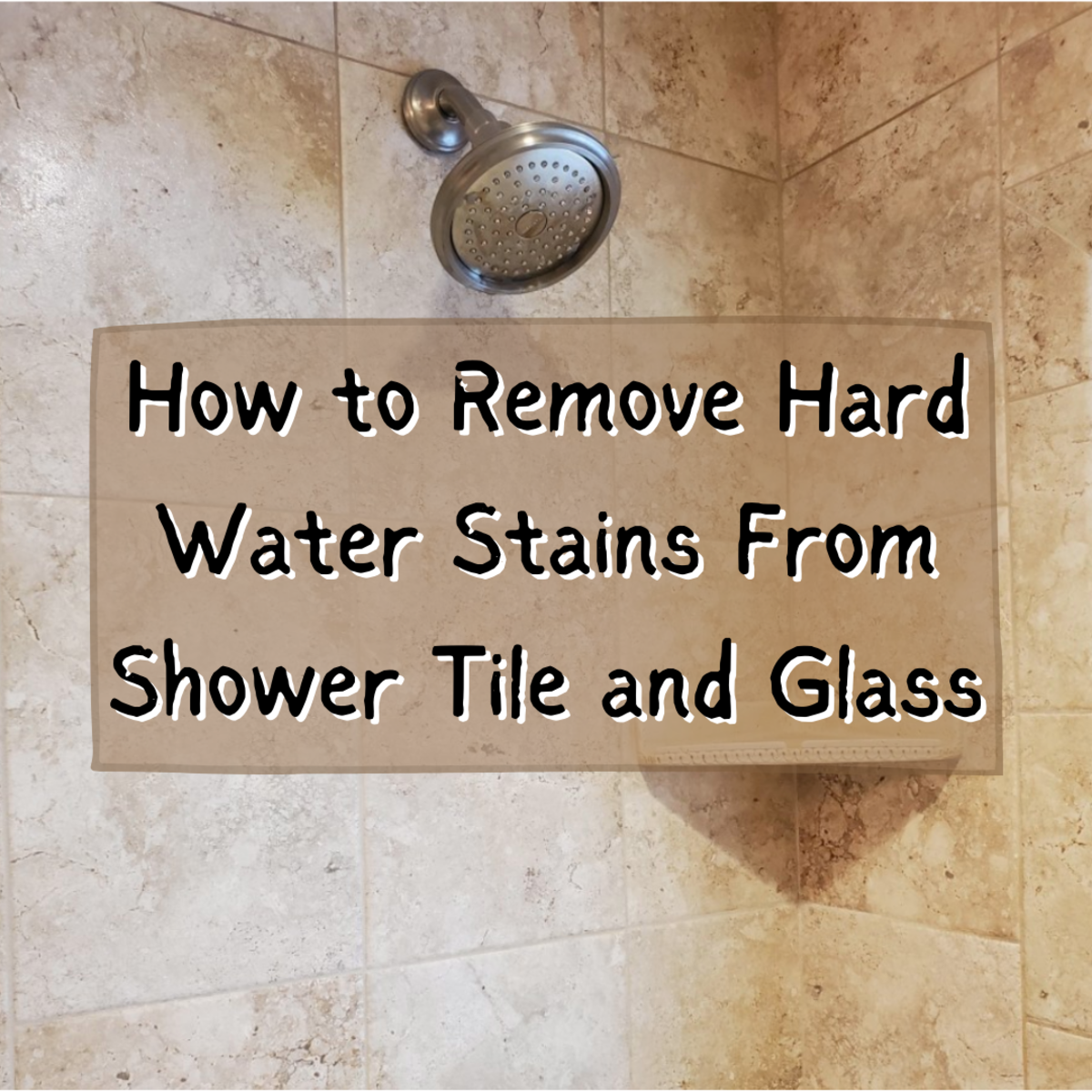Understanding Common Bathroom Tile Stains
Bathroom tile stains are a common nuisance that can detract from the overall cleanliness and appearance of your bathroom. Understanding the types of stains you may encounter is the first step toward effective removal and prevention. Here are some of the most common bathroom tile stains:
- Soap Scum: Soap scum forms when soap residue combines with minerals in water, leaving behind a filmy layer on tiles and grout.
- Hard Water Stains: Hard water contains minerals like calcium and magnesium, which can leave behind white, chalky deposits on tiles and fixtures.
- Mildew and Mold: Moisture-rich environments like bathrooms are prone to mildew and mold growth, which appear as dark spots or patches on tiles and grout.
- Grout Stains: Grout, the material between tiles, can become stained from dirt, mildew, mold, or spills, detracting from the overall appearance of the tiled surface.
- Rust Stains: Rust stains occur when metal fixtures or objects come into contact with water, causing oxidation and leaving behind reddish-brown stains on tiles and grout.

Effective DIY Methods for Bathroom Tile Stain Removal
When it comes to removing stains from bathroom tiles, you don’t always need to rely on harsh chemicals or professional services. Many effective DIY methods can tackle common stains using household ingredients. Here are some tried-and-tested DIY methods for bathroom tile stain removal:
Vinegar and Baking Soda Paste: Create a paste by mixing vinegar and baking soda until it forms a thick consistency. Apply the paste to stained areas, let it sit for about 15-20 minutes, then scrub with a brush and rinse thoroughly.
Lemon Juice: The acidic properties of lemon juice can help break down soap scum and hard water stains. Simply squeeze fresh lemon juice onto the stained areas, let it sit for a few minutes, then scrub and rinse.
Hydrogen Peroxide: Hydrogen peroxide is effective at removing mildew and mold stains. Pour hydrogen peroxide directly onto the stained areas, let it sit for 10-15 minutes, then scrub and rinse.
Borax Solution: Borax is a natural cleaner that can effectively remove stains and inhibit mold growth. Mix borax with water to create a paste, apply it to the stained areas, scrub, and rinse thoroughly.
Steam Cleaning: Steam cleaners use hot steam to loosen and lift dirt, grime, and stains from tiles and grout. Simply fill the steam cleaner with water, let it heat up, then use the nozzle to direct steam onto the stained areas.

Using Natural Remedies for Eco-Friendly Stain Removal
For those who prioritize environmentally friendly cleaning solutions, natural remedies offer effective alternatives to chemical-based cleaners. These eco-friendly options not only help remove stains from bathroom tiles but also contribute to a healthier indoor environment. Here are some natural remedies for eco-friendly stain removal:
White Vinegar: White vinegar is a versatile cleaning agent that can effectively dissolve soap scum, hard water stains, and mineral deposits. Simply dilute white vinegar with water in a spray bottle, spray it onto the stained areas, let it sit for a few minutes, then scrub and rinse.
Baking Soda: Baking soda is a gentle abrasive that can help scrub away tough stains without scratching tile surfaces. Sprinkle baking soda onto the stained areas, then spray with vinegar to create a foaming reaction. Scrub the area with a brush, then rinse thoroughly.
Essential Oils: Certain essential oils like tea tree oil and lavender oil have antimicrobial properties that can help inhibit mold and mildew growth. Add a few drops of essential oil to water in a spray bottle, spray it onto the stained areas, then scrub and rinse.
Castile Soap: Castile soap is a gentle, plant-based soap that can effectively clean bathroom tiles without harsh chemicals. Dilute castile soap with water in a spray bottle, spray it onto the stained areas, let it sit for a few minutes, then scrub and rinse.
Citrus Peel Infusion: Save citrus peels like lemon, orange, or grapefruit, and infuse them in vinegar for a few weeks. Strain the vinegar and use it as a natural cleaner to remove stains from bathroom tiles.
Specialty Products: The Pros and Cons of Tough Stains
For stubborn stains that resist DIY methods and natural remedies, specialty cleaning products offer targeted solutions. However, it’s essential to weigh the pros and cons of these products before use. Here are some common specialty products for tough bathroom tile stains:
Tile and Grout Cleaners: These products are specifically formulated to penetrate and dissolve tough stains on tiles and grout. They often contain powerful chemicals like bleach or acids, which can effectively remove stains but may pose health and environmental risks if not used properly.
Mold and Mildew Removers: Mold and mildew removers contain ingredients like chlorine bleach or hydrogen peroxide, which can kill mold and mildew spores on contact. While effective at removing stains, these products may have strong odors and require proper ventilation during use.
Rust Stain Removers: Rust stain removers contain acids like oxalic acid or hydrochloric acid, which can dissolve rust stains from tiles and grout. While effective, these products can be corrosive and may damage surfaces if not used carefully.
Grout Sealers: Grout sealers provide a protective barrier against stains, moisture, and dirt, preventing them from penetrating grout lines. While effective at preventing stains, grout sealers require regular reapplication and may alter the appearance of grout.
Heavy-Duty Cleaners: Some specialty cleaners are designed for industrial or commercial use and are highly effective at removing tough stains from bathroom tiles. However, these products may contain harsh chemicals and require proper safety precautions during use.
Preventive Measures to Maintain Spotless Bathroom Tiles
Prevention is key to maintaining spotless bathroom tiles and minimizing the need for frequent cleaning and stain removal. By implementing some simple preventive measures, you can keep your tiles looking fresh and clean for longer periods. Here are some preventive measures to consider:
Regular Cleaning: Establish a regular cleaning routine to prevent dirt, grime, and stains from building up on bathroom tiles. Sweep or vacuum floors regularly to remove loose dirt and debris, and wipe down tiles and fixtures with a mild cleaner and water solution.
Ventilation: Proper ventilation is essential for preventing moisture buildup in bathrooms, which can lead to mold, mildew, and stains. Use exhaust fans or open windows during and after showers to allow excess moisture to escape.
Dry Surfaces: After using the shower or bathtub, dry tiled surfaces with a squeegee or towel to prevent water spots and mineral deposits from forming.
Use Mats and Rugs: Place mats or rugs near sinks, showers, and tubs to absorb water and prevent water from pooling on tiled surfaces.
Seal Grout: Apply a grout sealer to newly installed grout lines and periodically reapply it to maintain a protective barrier against stains and moisture.
Address Stains Promptly: Don’t let stains linger on bathroom tiles. Address them promptly using appropriate cleaning methods to prevent them from becoming more stubborn and difficult to remove.
Remove Rust Stains From Tiles Using These Simple Home Remedies
How to Get Rid of Pink Mold in Your Shower
How to clean tiles with stubborn stains (Bathroom)? HardwareZone
How To Clean Dirty White Tiles to make Pure White Tiles At Home
3 Ways to Remove Stains from Tiles – wikiHow
How to Remove Hard Water Stains from Bathroom Tiles Easily
3 Ways to Remove Stains from Tiles – wikiHow
How to remove hard water stains in bathroom tiles
How to Remove Hard Water Stains From Shower Tile and Glass – Dengarden
Related Posts:
- Sage Green Bathroom Tiles
- Sky Blue Bathroom Tiles
- Cleaning Bathroom Tiles White Vinegar
- Bathroom Tile Photos Galleries
- Bathroom Tile Feature Wall Hints
- How To Remove Mildew From Bathroom Tile
- Bathroom Tile Retro
- What Is The Best Way To Clean Bathroom Tile Grout
- Ceramic Bathroom Tile Ideas
- Nitco Bathroom Tiles Images











